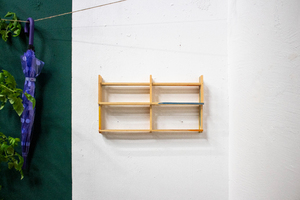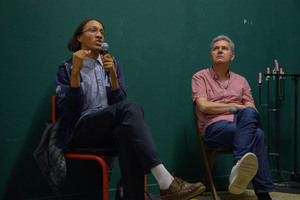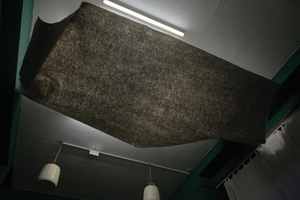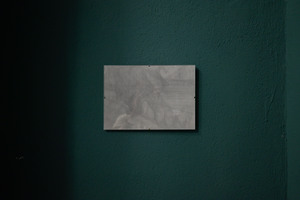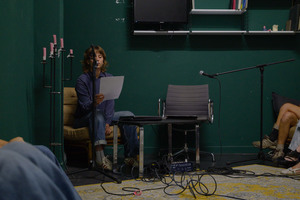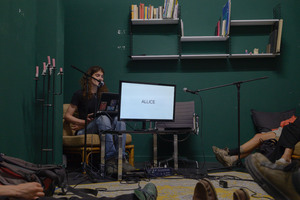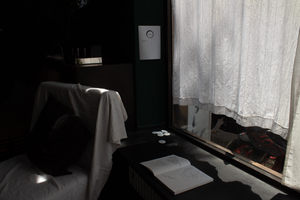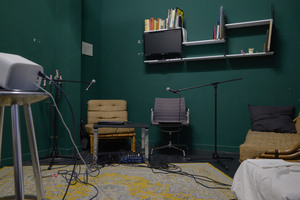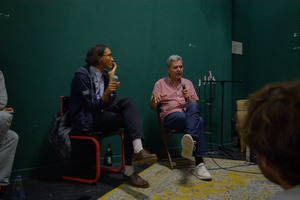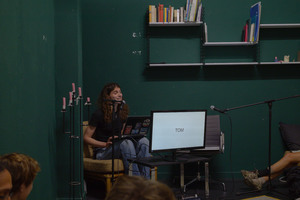| Title | |
| Title (en) | |
| Subtitle | - A salonesque affair hosted by Filler Verlag
|
| Subtitle of the project/work (en) | - A salonesque affair hosted by Filler Verlag
|
| Author | |
| Description (de) | - Filler Verlag ist eine unabhängige Plattform für das Buch und für den Diskurs, der aus ihm hervorgeht. „Verlegen“ wird dabei nicht als Akt der Verteilung, sondern als ein Akt des Teilens verstanden. Der Fokus liegt auf der kollektiven Entwicklung und dem Fördern von Diskurs. Mit diesem experimentellen Ansatz denkt Filler das Buch weiter: Wie kann es als Medium in einer zunehmend digitalen und schnelllebigen Welt relevant bleiben? Welche Rolle spielen unabhängige Verlage in einer Zeit, in der Massenproduktion und Standardisierung dominieren?
Aus diesen Fragen heraus entstand Big Hat Big Problems – eine Reihe von Zusammenkünften. Sowohl im physischen als auch im metaphorischen Sinne ist Big Hat Big Problems ein Ort der ständigen Verhandlung und des Austauschs, aber auch des Verweilens. In der Struktur gibt es Referenzen zu literarischen Salons. Lesungen, Gespräche, dicke Teppiche, gemütliche Sessel und gedimmtes Licht. Ein entscheidender Unterschied: Die Gästeliste ist nicht exklusiv.
Big Hat Big Problems ist eine Einladung, das Buch nicht wie üblich als ersten Schritt des Veröffentlichens zu begreifen, sondern als Mittel, um Öffentlichkeiten zu schaffen. An diesen Öffentlichkeiten bedient sich Filler, denn aus jedem Treffen sollen Nachträge der Beitragenden, aber auch Einfälle oder offene Fragen der Teilnehmenden hervorgehen und festgehalten werden. Diese sollen das anfängliche Skript und somit den Inhalt des Buches fortschreiben. Als Gegenthese zum traditionellen Austellungskatalog, der ein Projekt abschließt, wird der Katalog zu Big Hat Big Problems durch jede Veranstaltung erweitert. Er ist modular, jede Zusammenkunft ein Kapitel.
Das Programm ist nicht thematisch gegliedert, Schwerpunkt liegt auf ephemeren Aspekten. Die Fokussierung auf einen Abend – dass alles nur einmal zu hören oder zu sehen ist –
lenkt die Kuration. Den Großteil der Beiträge machen gelesene Texte aus, auch die Aufnahme eines Hörspiels wird nur einmal abgespielt. Die Straße vor dem Ausstellungsraum wird auch durch eine große Kreidezeichnung bespielt. Der Salon öffnet sich; veröffentlicht sich. Im Grunde ist das schon Kunst im öffentlichen Raum, am nächsten Tag aber wieder weg. Das Programm hat keinen Zeitplan, nur eine Reihenfolge und im Laufe des Abends kommt es zu zufälligen Begegnungen und ungeplanten Beziehungen zwischen den Texten. Und innerhalb des Publikums auch, dass à la Salon in den Pausen zwischen den Interventionen über das Erfahrene diskutiert. Big Hat Big Problems will zeigen, dass jede Bewegung und jedes Verstehen nur im Bezug auf andere und ihre Worte möglich ist – auch das Verstehen der eigenen Position, der eigenen Arbeitsweisen und ihrer Wirkung. Kunst, die uns oder etwas berührt, entsteht stets im Dialog mit den Ideen anderer.
Es bleibt Raum für Zweifel, für unvollendete Gedanken und ein Glas zwischendurch. Es gibt keine Botschaften zu entschlüsseln – nur die Einladung, Mehrdeutigkeiten zu akzeptieren.
Die Dokumentation ist absichtlich reduziert, um Performer*innen aber auch Besucher*innen einen freien Raum zu geben.
|
| Description (en) | - Filler Verlag is an independent platform for the book and for the discourse that emerges from it. “Publishing” is not understood as an act of distribution, but as an act of sharing. The focus is on collective development and the promotion of discourse. With this experimental approach, Filler thinks the book further: How can it remain relevant as a medium in an increasingly digital and fast-moving world? What role do independent publishers play in an age dominated by mass production and standardization? these questions gave rise to Big Hat Big Problems - a series of gatherings. In both a physical and metaphorical sense, Big Hat Big Problems is a place of constant negotiation and exchange, but also of dwelling. There are references to literary salons in the structure. Readings, conversations, thick carpets, cozy armchairs and dimmed lights. One decisive difference: the guest list is not exclusive.Big Hat Big Problems is an invitation to see the book not as the first step towards publication, as is usually the case, but as a means of creating publics. Filler makes use of these publics, as each meeting is intended to produce and record additions from the contributors, as well as ideas or open questions from the participants. These are intended to continue the initial script and thus the content of the book. As an antithesis to the traditional exhibition catalog that concludes a project, the catalog for Big Hat Big Problems is expanded through each event. It is modular, each meeting is a chapter, the program is not thematically structured, the focus is on ephemeral aspects. The focus on the single evening - that everything can only be heard or seen once - guides the curation. The majority of the contributions consist of read texts, even the recording of a audio play is only played once. The street in front of the exhibition space is covered by a large chalk drawing. The salon opens up; publishes itself. Basically, this is already art in public space, but it's gone again the next day. The program has no schedule, only a sequence, and in the course of the evening there are chance encounters and unplanned relationships between the texts. And within the audience, too, that à la Salon discusses what they have experienced in the breaks between the performances. Big Hat Big Problems wants to show that every movement and every understanding is only possible in relation to others and their words - including the understanding of one's own position, one's own working methods and their effect. Art that touches us or something is always created in dialog with the ideas of others. There is room for doubt, for unfinished thoughts and a glass in between. There are no messages to decipher - only the invitation to accept ambiguity. The documentation is intentionally reduced to create an open space for both performers and visitors.
|
| Category | |
| Type of project / creative work | |
| Keywords | |
| Date | - 3./15. Juli 2025, fortlaufend
|
| Contributors | |
| Language | |
| Material | |
| Location: institution | |
| City | |
| Country | |
